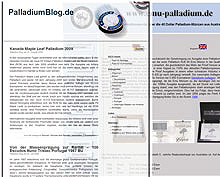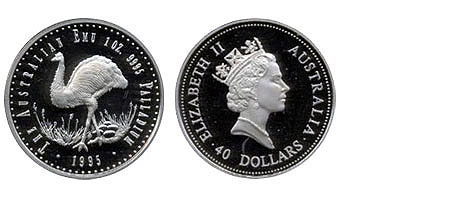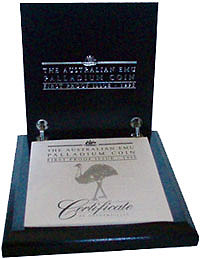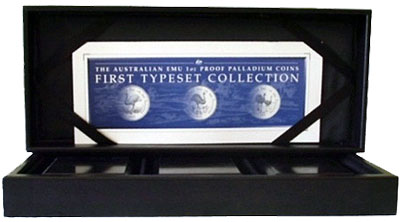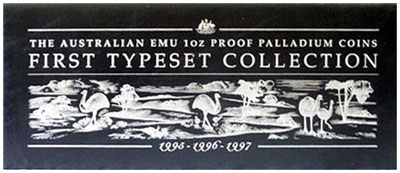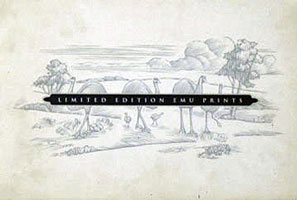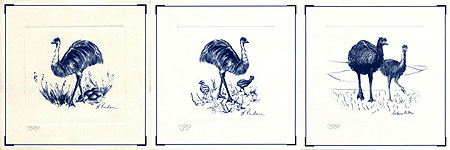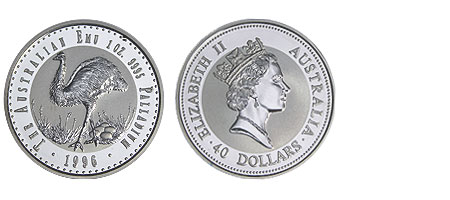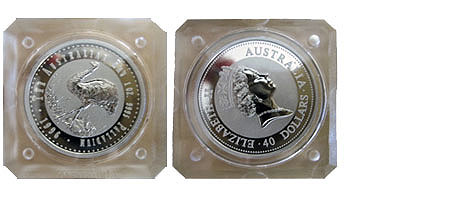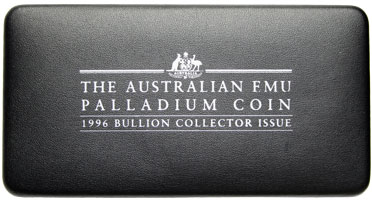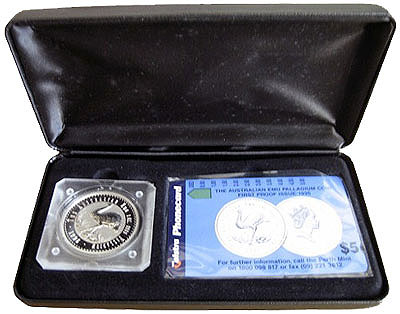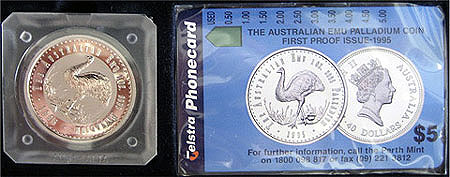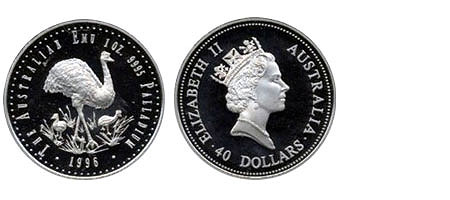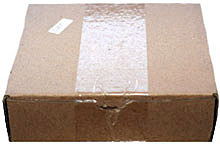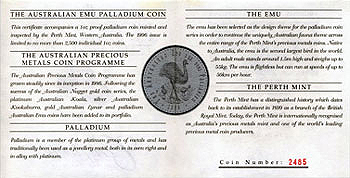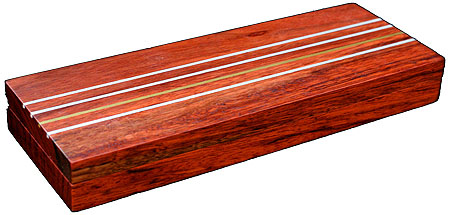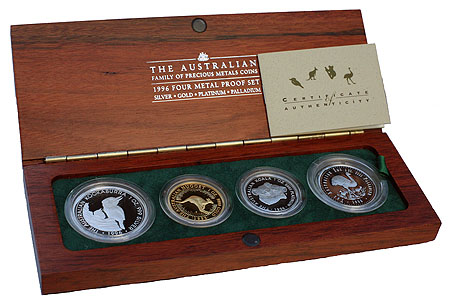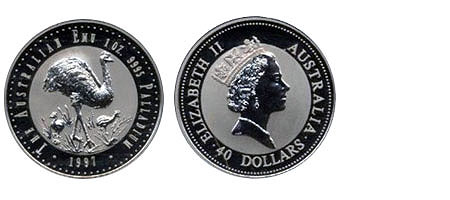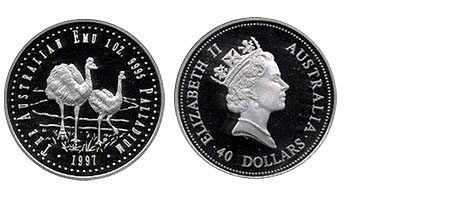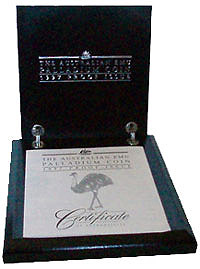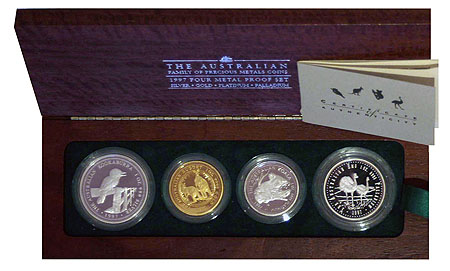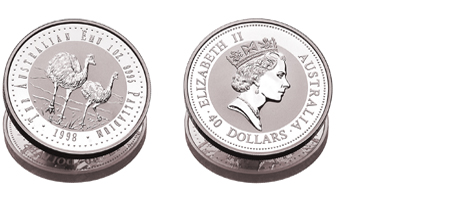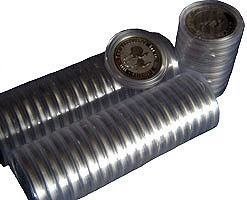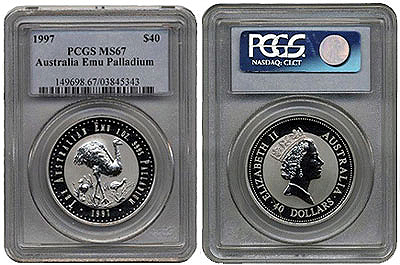Ende 1994 erhielt die Perth Mint vom australischen Bundesschatzamt die Genehmigung zur Ausgabe einer Palladium-Münzserie. Im Oktober des darauf folgenden Jahres erschien die erste Palladium AU$ 40 Emu Münze in der Qualität Proof. 1996 wurde die Serie um eine Bullionausgabe (Bu) erweitert, die grundsätzlich das Motiv der Proof Version aus dem Vorjahr trägt. Die Bullionausgaben wurden lediglich in einer Kapsel zu 110% des aktuellen Palladiumpreises von der Perth Mint verkauft. Im Vergleich dazu wurden die Proof Ausgaben in einem edlen schwarzen Holzetui mit Zertifikat zu einem Festpreis zwischen AU$ 350 und AU$ 425 (je nach Jahrgang) verkauft. Die maximalen Auflagen pro Jahr lagen bei der Proof Version bei 2.500 und bei der Bu Version bei 5.000 Exemplaren (detaillierte Auflagen). Allerdings wurden teilweise nicht die kompletten Auflagen ausgeprägt, da die Emu Münzen zu der damaligen Zeit nicht sehr beliebt waren. Des weiteren wurde die Produktion der 1998er Ausgabe ausgesetzt, da auf Grund Lieferblockaden von Seiten Russlands kaum Palladium zur Verfügung stand, was den Palladiumpreis stark ansteigen ließ. In dieser Zeit wurden etliche Palladiummünzen, so auch die Emus, eingeschmolzen. Dies hat zur Folge, dass heute teilweise sehr hohe Aufschläge für Palladiummünzen beim Erwerb zu zahlen sind. Im Jahr 2006 prägte die Perth Mint die 1998er Ausgabe nach. Ausführliche Infos zu der Nachprägung finden Sie in der Rubrik 1998.
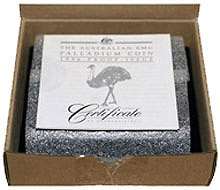
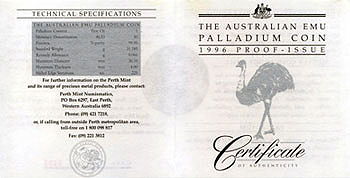
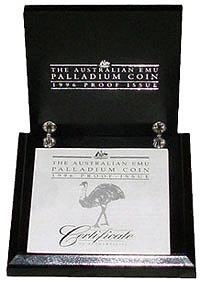
Die Wertseite der Münzen ziert Königin Elisabeth II., welche Staatsoberhaupt von Australien ist. Auf der Bildseite sind folgende Motive zu sehen:
1995 Proof: Emu mit Gelege und Eiern
1996 Bu: Emu mit Gelege und Eiern
1996 Proof: Emu mit zwei Küken
1997 Bu: Emu mit zwei Küken
1997 Proof: Emu mit Jungtier
1998 Bu: Emu mit Jungtier
Das Design der Wertseite stammt von Raphael Maklouf. Bei der Bildseite wechselten sich zwei Designerinnen ab. Louise Pinder war für die Ausgaben 1995-1996 in Proof sowie 1996-1997 in Bu zuständig. Die Ausgaben 1997 in Proof und 1998 Bu wurde von Milena Milan gestaltet.
Folgende technische Parameter spezifizieren die Emu Palladiumausgaben:
Nominal: AU$40
Gewicht: 31,185g
Material: Palladium Pd
Unze: 1
Feinheit: 99,95%
Durchmesser: max. 36,10mm
Dicke: max. 4,00mm
Randprägung: 225 Rillen/ Vertiefungen
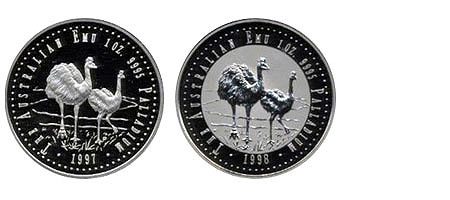
Wie Sie an den beiden Bildern erkennen können, gibt es weitere Unterschiede zwischen den beiden Versionen Bu und Proof. Bei der Bu Ausgabe, welche zu Anlagezwecken gedacht war, wurde ein Teil des Hintergrundes matt gehalten und Elemente des Bildes glänzend geprägt. Im Vergleich hierzu wurde bei der Proof Ausgabe der komplette Hintergrund der Münze glänzend geprägt und die Bildelemente matt gehalten. Bei der Prägung einer Proof Münze werden speziell behandelte Ronden, die auf Hochglanz poliert wurden, sowie polierte Prägestempel verwendet. Des weiteren wird bei der Prägung von Proof Münzen ein höherer Prägedruck, sowie eine langsamere Prägegeschwindigkeit gewählt, um makellose Stücke zu erhalten. Dieser Aufwand lässt erklären, weshalb die Proof Ausgaben zu einem Festpreis, der weitaus höher war als der Materialpreis, verkauft wurden. Ein weiteres Unterscheidungsmerkmal der Proof Münze im Vergleich zur Bu Ausgabe ist, dass bei jeder Proof Münze ein „P“, als Münzzeichen der Perth Mint, auf die Münze geprägt wurde.
Sie können dieses Münzzeichen bei den Proof Ausgaben an folgenden Stellen finden:
1995 Proof: unterhalb des Emuhalses am oberen Grasansatz
1996 Proof: unterhalb des Emuschweifes am oberen Grasansatz
1997 Proof: am linken Fuß des Emu-Jungtiers
